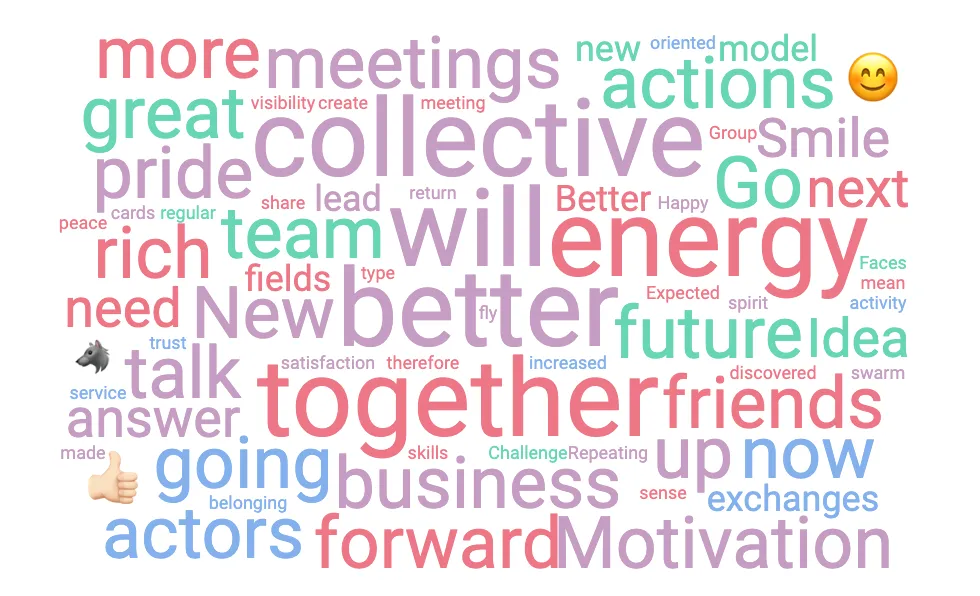How to build a strong and committed team with 100 managers in times of change?
A challenging context
A lot of international companies are going through radical transformation, including many of our clients. One of them reached out to us, because a key business unit was about to embark on a very ambitious re-organization, and asked for our support. For most of the people involved, it was the first time they had to go through such a momentous transformation. They recognized that they needed outside help in such circumstances. Moreover, middle manager commitment was going to be crucial if this plan was to succeed – even though that layer of the organisation is typically the most difficult to onboard.

The challenge was great: the team, made of 2000 people with very different jobs, led by 100 managers who have not even met before, need to learn to work together from now on in completely different manner and leave behind a siloed culture. Only in this way would the business unit be able to create value for the organisation.
Our client was very clear: “before, people only said they wanted change to happen but in reality did nothing. Now, we will make change actually happen!”
Identifying the underlying challenge
The problem was one we often face: how to bring everyone on-board? How to mobilize all teams and create momentum?
To tackle these issues,, we use methodologies and practices drawn from collective intelligence. We co-designed the program for a one-day on-site seminar with our client, being careful to meet the participants “where they are” and to answer their needs the best we could. We also knew we needed all managers to feel responsible about the challenges ahead. This would be the only way for them to really start caring about and contributing towards the end goals.

Designing a two-step program
Our program consisted of two parts. The first one was about getting the bigger picture and allowing the team to be inspired by relevant insights: what is about to change in their ecosystem, what are the challenges in each of the newly created departments? Then managers were able to identify the common ground between them, based on this part.
A trap you can easily fall into when sharing information and exploring is to not leave people enough time for appropriation and to transform this information into knowledge. So we implemented discussion rounds between participants, Q&A sequences and gave the opportunity for them to use their own words in sharing with their groups what they learned. This was important, especially in our example because there was a lot of information to ingest in a very limited amount of time. The Q&A part is also really important so participants can express their doubts, fears and remarks: it is key to not leave things unsaid if we want the team to move forward in a healthy way.

The second part in our program was about building shared objectives. Now that the participants knew each other better and have identified their common challenges, it was time for them to start working towards solutions to implement. We created groups with people from various departments to increase the cross-pollination of ideas and they drafted together the next first steps they needed to take in order to address their challenges.
What a difference a single day can make!
At the end of the one-day seminar, participants had created bonds between them and realized they are not as different as they previously thought. By spending a whole day working with their peers, they developed greater empathy towards each other and thus collaboration between them will be much easier going forward. They have also found a renewed energy and meaning in their work, as shown by the survey we conducted immediately following the event.

Follow-up steps after this seminar have since been identified. The executive team has incorporated the contributions they received and green lighted three priority areas to start working on.
Our client achieved its goal: participants are energized and have clearly identified their challenges and the measures to put in place, and are committed to work towards their common objectives. The transformation they are facing still has hurdles ahead, but they are now a strong an united team. And that is exactly what this type of seminar is designed for!
If you and your teams are facing similar challenges as those described in this article, and you think Fabric might be a good fit to support you, please reach out:

I am contributing to generate a future of work desirable for people, organisations and society. I include diversity and connect polarities that are too often split apart : science & humanity, freedom & constrains, profit & ethics, local & global, preservation & creativity, digital & human.
Chloé Grabli
Partner
Learn more on Linkedin